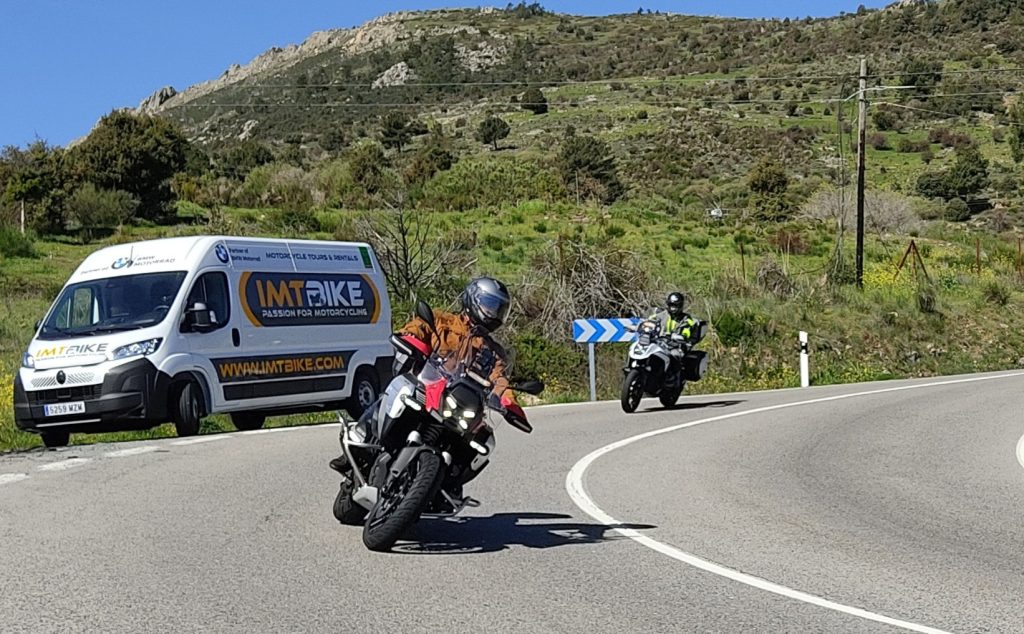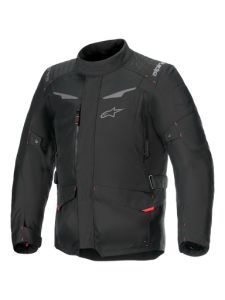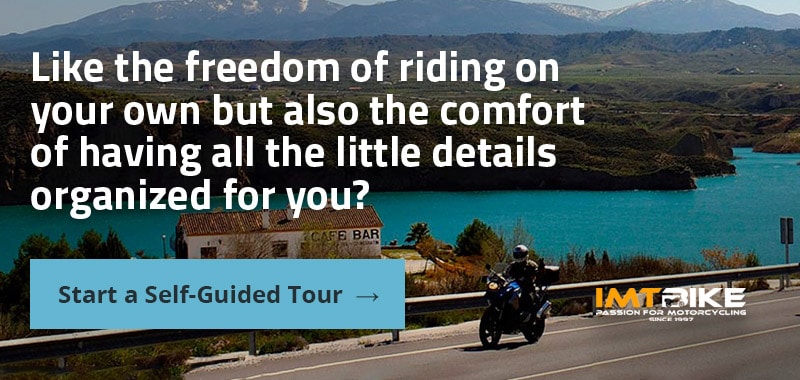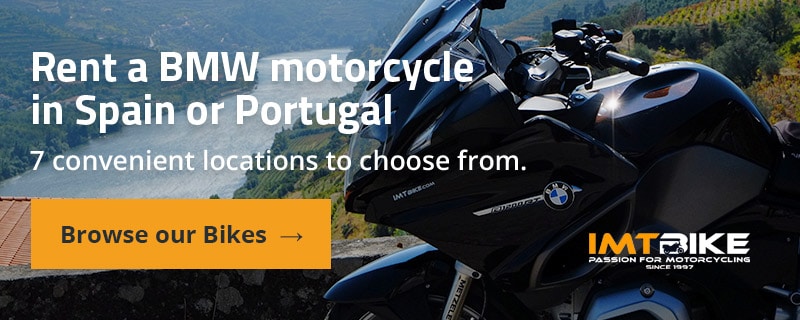
Essential gear for Motorcycle Travel
May 13, 2025Before starting a motorcycle trip, we must be fully aware of carrying the proper gear. One of the pillars of IMTBIKE’s philosophy is safety—something we must consider when choosing our motorcycle clothing.
When it comes to comfort and suitability, it will depend on the distances and the latitudes we’ll be covering to equip ourselves properly, since we won’t dress the same if we’re visiting a very hot place as we would riding through an extremely cold area. In any case, if there’s one thing we’re absolutely sure about, it’s that a rain suit is a must-have on a motorcycle trip—because you never know…
Essential Accessories for Your Motorcycle Trip
In the following post, we’re going to provide an essential list of the necessary riding gear—and in some cases, even mandatory—that will make your motorcycle trip a safe and comfortable experience.
Helmet
Mandatory, of course—a motorcycle helmet must fully cover our head. In that sense, full-face helmets, made of a single piece, are the most effective at performing their function as they offer the highest level of protection. A step above, we find modular helmets, which are more versatile since their shell can be articulated. This allows us to uncover our face without taking the helmet off. However, as they’re made of two pieces, they are also heavier than full-face helmets.
While not yet banned in Spain, at IMTBIKE we discourage the use of jet-type helmets, as they are not suitable or safe for motorcycle travel.
Gloves
Historically, summer gloves have provided a more precise and comfortable grip on the handlebars and controls than winter gloves, which also leads to a higher level of safety by offering a better sense of control.
However, there are now winter gloves made of Gore-Tex that are much lighter and have outer surfaces compatible with touchscreens. In today’s smartphone era, thick winter gloves make it impossible to use touchscreens, which is why it’s important that the material used is lightweight.
We recommend leather gloves, as they best adapt to the shape of your hand and become more comfortable the more you wear them. We also want to emphasize the importance of having reinforced areas in high-wear zones and protective padding over the knuckles.
Jacket
Unlike gloves, the material we recommend for both jackets and pants is Cordura. If this material is also waterproofed, even better. And if it includes extra zippers for summer ventilation, all the better.
The jacket must include a few essential elements. One of them is protective padding, which is crucial to prevent serious injuries in case of a fall. Shoulders, elbows, and back are areas we must protect without exception. Another essential feature is pockets—and trust us, if we didn’t have them, we’d miss them a lot. For example, the person writing this can’t travel without the pocket some jackets have at the end of the left sleeve, very useful for carrying a credit card, cash, documents, toll tickets, etc.
By renting a BMW with IMTBIKE, you also have the option to rent high-quality jackets, helmets, and gloves to ensure a premium riding experience.
Pants
The first paragraph and part of the second about jackets apply here as well. For pants, protective padding is required on the knees and shins, and on the hips.
Pockets are another element that can’t be missing from motorcycle pants. In fact, there should be enough to carry your wallet, phone, and… the key. Yes, the key—because more and more motorcycles now come with keyless systems. We recommend carrying at least these three items in your pants rather than your jacket, because in many stops, especially when it’s hot, we take off our jackets, and there’s a risk of losing them—and with them, everything of value we were carrying. On the other hand, it’s pretty rare to lose your pants, so it’s better to always carry these items on you.
Boots
As with gloves, boots must offer enough feel to ride comfortably and safely. Sole grip on the footpeg is also very important, so that your lower limbs stay securely in place, especially on sharp leans. The sole should be fairly sturdy for this purpose, while the boot shaft should be reinforced at the ankle area to protect this joint.
Abrasion resistance and waterproofing are factors we cannot overlook. When it rains, keeping your feet dry and warm is crucial to continue your ride under the most comfortable conditions possible.
Extra Accessories
So far, we’ve covered the essential gear for tackling a motorcycle trip in the best possible conditions of comfort and safety. If we want to take it a step further, we can expand our riding wardrobe with these other items:
- Neck gaiter. With countless uses, the neck gaiter is a piece of clothing used by 99% of motorcycle travelers. It can protect us from both cold and heat, help wipe off sweat, and even be used to cover our head when putting on the helmet and thus protect its interior. One of the most popular brands is Buff—so much so that most of the time we just say “buff” when referring to a neck gaiter.
- Thermal wear. These take up very little space in our luggage and are much appreciated when the cold sets in. They help maintain body heat, which greatly contributes to both comfort and safety.
There is also thermal wear for summer, made from breathable material that retains sweat, keeping our skin dry and preventing moisture from soaking other clothing. They should fit snugly, and some can even be moistened with water to keep us even cooler. - Raincoat. If your motorcycle gear is waterproof, logically, you won’t need a raincoat. If not, bring one—even if you’re crossing the desert. You never know when a sudden downpour might hit, and even if it lasts just a minute, you’ll be riding wet for most of the day. One-piece suits are better: harder to put on, sure, but more effective at keeping water out.
- Cooling vest. Body temperature is something we need to monitor while covering long distances on a motorcycle, which is why including a cooling vest in our gear isn’t a bad idea. These aren’t electric like heated vests—they’re filled with water. In contact with your body, the water evaporates and regulates your temperature. They can last up to 8 hours.




